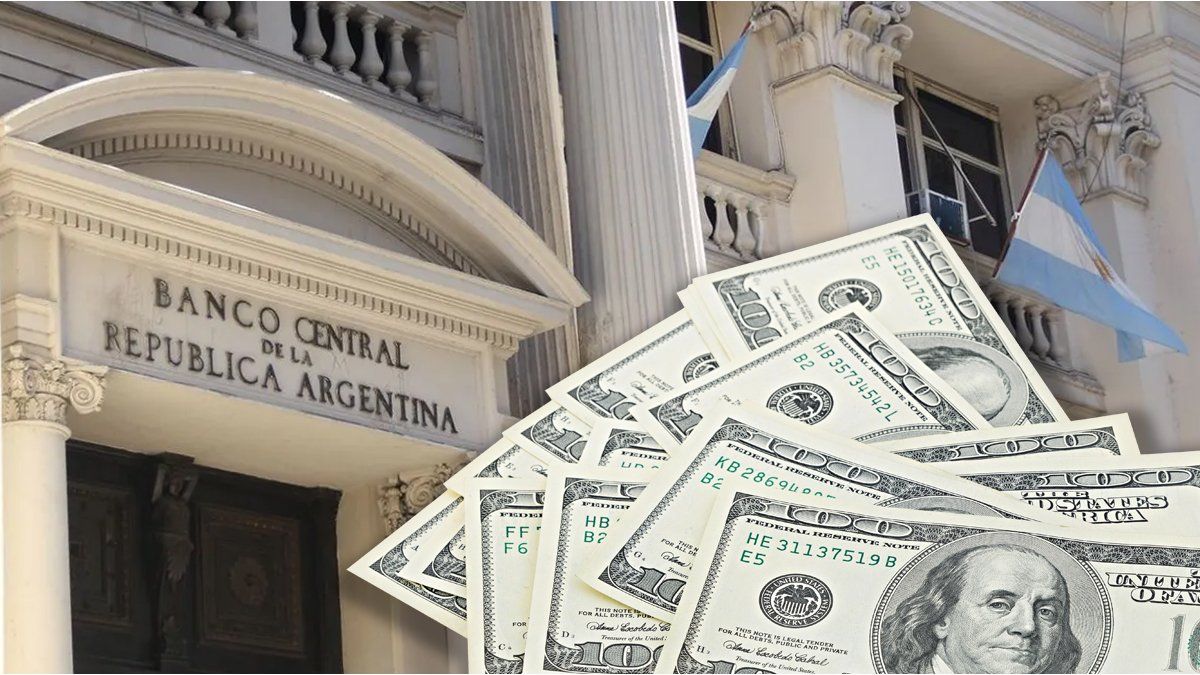In recent days, the Central Bank improved its performance in foreign currency purchasessomething that had not happened since the end of May. With the data updated to Friday, the official market concluded its second consecutive week with a positive balance, although in the medium term, analysts say that a series of conditions must be met to leave the “risk zone.” The Government has in mind the fulfillment of the goal with the IMF of reaching reserves of US$8.7 billion by September 30 and there are variables that could play in its favor and against it.
Stockpiling: Why performance improved in August
“The goal that the Government agreed with the IMF is to accumulate reserves of US$8.7 billion, which means that net reserves should reach about US$-2.5 billion. Despite everything, There are reasons to believe that the objective can be achieved. On the one hand, during the month and in September, the energy trade balance improves, which would help to stop one of the main drains of foreign currency and, in addition, there is money laundering,” said Francisco Ritorto, economist at ACM in dialogue with Scope.
Since the beginning of August, private demand, which had been the target at the end of July, has slowed down significantly. This has allowed for a surplus of dollars for the BCRA to acquire, even though the supply from exporters has decreased. This was indicated by Personal Investment Portfolio (PPI) in its latest weekly report. On the demand side, they highlight that the lower flow of energy imports has contributed, having passed its seasonal peak, as Ritorto suggested.
Finally, the collapse of international agricultural commodity prices and the confirmation that the dollar blend will continue, forced producers to liquidate more out of necessity than convenience.
This month ON and provincial obligations expireIn September, payments will begin under the new import scheme, which requires the official market to account for more than 100% of the import flow. In this context, the fear is that the BCRA will once again become a net seller.
“Although the BCRA was able to recover more in August than it sold during June and July (US$306 million purchased vs. US$265 million sold in the previous two months), Net reserves remain at very negative levelsAccording to our calculations, they are estimated at -US$6.407 billion. If there are no changes in the exchange rate scheme, The short-term outlook for reserves is unfavorable,” explain from PPI. It is important to remember that the problem of the accumulation of dollars is not only about reaching the IMF’s goal without having to go through a waiver, but rather it generates tension in the Government’s ability to meet its payment obligations to bondholders, affecting the price of these assets.
Money laundering: key to August and September bookings
The Government is waiting in these two months for some bilateral loan that can be obtained, what can be added from the RIGI – although it is a slower process – and of course, money laundering, which is almost the main card to accumulate dollars in a short time.
The economist Federico Glustein He said that money laundering is the tool to support the accumulation of reserves of around US$2 billion. Although he said that adding reserves will be challenging, he explains that the problem will be more on the IMF’s side: “The IMF will propose other tougher objectives and extra efforts such as eliminating the restrictions, the exchange rate unification or the elimination of the PAIS Tax for a new disbursement.”
taxes afip moratorium money laundering
Money laundering remains the Government’s main card to improve the accumulation of dollars
freepik.es
In contrast to the previous analysis, Andres Reschini F2 Financial Solutions added: “The issue of reserves continues to be the weakest point of this administration, but if we get to September and the goals are missing $1,000 million, I don’t see it as so serious. I don’t see the IMF getting tough on this, given the effort made in this administration for fiscal balance.”
There are two other factors that could ease the pressure on the Government: according to a report by Lorena Giorgio and Lorenzo Sigaut Gravigna, these are: 1) the use of the Treasury’s own funds for payments in dollars, and 2) the greater supply of foreign currency in the CCL, which would require less intervention by the BCRA. In fact, in relation to this last point, Grupo IEB maintains that such intervention “It seems not to exist, or if the Central Bank does so in a very limited way judging by the volumes traded in AL30 and GD30.”
Finally, it is important to note the improvement in the price of bonds compared to July, the exchange rate stability with a CCL that is around $1,200 and the positive balance of the MULC so far this month, easing market tensions in relation to the accumulated dollars. That is why the result of the money laundering – which is expected to be positive – is almost the main card of the Ministry of Economy.
Source: Ambito




